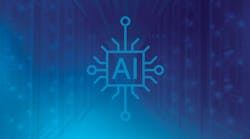How Circuit Breaker Modernizations Can Help Improve Reliability in Data Centers
The importance of circuit breakers in data center operations
Data centers play a pivotal role in modern society. As the backbone of today's digital infrastructure, these facilities have become increasingly vital to ensuring the uninterrupted operation of many critical systems. Services for healthcare, government, and financial institutions (to name only a few) depend on seamless communications, real-time information processing, and secure handling of sensitive data.
As a result, ensuring the reliability and availability of data center operations remains paramount. Central to ensuring this reliability is the effective management, maintenance, and modernization of electrical systems, particularly circuit breakers and switchgear. Data centers use massive amounts of energy, and the strains on these facilities only increase as demand for their services continues to rise. Circuit breakers help manage electrical loads effectively, ensure safety of the facility and personnel, prevent unexpected downtime, and safeguard sensitive equipment from electrical failures.
Today, however, many data centers operate within buildings constructed decades ago, with electrical systems designed and implemented before the advent of cloud computing and big data.
To help improve the reliability of data center operations, it may be time to replace and modernize legacy circuit breakers in favor of newer devices and solutions that can handle current technological and energy demands. These upgrades often include integrating smart technologies that provide real-time diagnostics, enhance operational efficiency, and offer new safety features.
What’s driving the need for circuit breaker modernizations?
Several factors drive the need for modernizing circuit breakers in data centers, each linked to the unique challenges and requirements of these technologically intensive environments – from aging infrastructure that struggles to keep pace with current demands to the necessity for enhanced safety and seamless integration with cutting-edge technologies. At the end of the day, electrical breaker modernizations bolster the reliability and uninterrupted functionality of data center operations while aligning with broader goals of sustainability and technological advancement.
Impact of aging infrastructure on data center electrical systems
According to data from CBRE, the U.S. is home to more than 5,300 data centers, many of which have been open for decades. In fact, data center operations date back to the 1950s and large mainframe computers; this evolved for the next 40 years until the advent of the Internet and microprocessors in the 1990s. This transformation led to the rapid construction of thousands of data centers that still operate today.
The electrical systems installed in these older data centers often struggle to handle the high power densities now required, leading to an increased risk of system failures. In addition, the original circuit breakers may have approached the end of their useful life. Aging infrastructure drives the need for modernization, as outdated breakers can overheat, cause short circuits, and even create fire hazards. Modernizing these systems with current breaker technology can extend the usefulness of existing infrastructure while boosting the reliability of data center operations.
The role of evolving electrical safety and maintenance standards
The vast array of servers and networking equipment rely on stable and safe electrical infrastructure. Ensuring robust electrical safety measures are in place is vital to protecting the people who work within data centers as well as preventing accidents such as arc flash events, electrical shocks, fires, and other hazards that can lead to unplanned downtime, financial loss, and personnel harm.
Over the years, NFPA 70E (Standard for Electrical Safety in the Workplace) and NFPA 70B (Standard for Electrical Equipment Maintenance) have evolved in response to advances in technology and safety practices. Legacy circuit breakers may have complied with older versions of these standards and practices.
Modern circuit breakers, designed with advanced safety features like arc flash protection and ground fault detection, significantly reduce the risk of accidents, elevating the overall safety of the facility. Moreover, newer breakers simplify maintenance and testing while contributing to a safer work environment via predictive maintenance strategies, remote monitoring and analytics, etc.
Circuit breaker modernization thus supports data centers’ initiatives to comply with NFPA 70E and NFPA 70B by integrating technologies that improve electrical safety and reduce the likelihood of hazardous incidents and disruptions.
Integration with emerging technologies
Legacy circuit breakers are not equipped to integrate with or adapt to today’s technologies. The advent of modern technologies such as the Internet of Things (IoT), machine learning (ML), artificial intelligence (AI), and new Electrical Power Management Systems (EPMS) has fundamentally changed how our buildings and systems work. For example, AI and ML workloads demand considerably higher power densities than more established processing platforms; more resilient electrical infrastructure is necessary to handle these intensive computational processes without interruption.
By modernizing breakers, data centers can take advantage of smart sensors that provide real-time data for electrical loads and system performance and can even proactively alert to potential maintenance issues. This connectivity enhances operational efficiency and reliability and enables data centers to embrace automation more broadly throughout their facilities, linking building architecture with mechanical and electrical solutions in ways that can optimize performance, enhance safety, and streamline operations – ultimately creating a more resilient data center infrastructure that can adapt and scale as needed.
Considerations and challenges for modernizing circuit breakers
While the benefits of upgrading circuit breakers in data centers are clear, data center operators must account for several considerations and challenges to help ensure successful implementations:
- Downtime: Upgrading electrical systems and equipment sometimes requires temporary shutdowns of power systems, potentially leading to operational interruptions for data centers without built-in redundancies. Careful planning and scheduling to minimize the impact on data center operations is essential; this might involve phased upgrades or temporary redundancies to ensure continuity of service.
- Cost: The initial outlay for upgrading circuit breakers can be significant, although retrofitting equipment instead of a “rip-and-replace” approach can be more financially feasible for some data centers. Executives must balance the upfront costs with the long-term benefits of reduced downtime and minimized maintenance expenses.
- Future-proofing: Investing in a circuit breaker modernization can help data centers better prepare for future operations. Consider, for example, how well existing electrical equipment and systems can adapt to and accommodate for liquid cooling, higher voltages at the racks, and other emerging technologies like AI and EPMS platforms.
- Technical expertise: The installation and maintenance of modern circuit breakers require specialized knowledge. Data centers need to either train existing personnel in these new technologies or consult with experts already skilled in modern electrical systems.
Assessing readiness: modernizing circuit breakers
For data centers with aging electrical infrastructure, modernizing circuit breakers can help increase the reliability, safety, and performance of these systems—while also enhancing infrastructure in ways that help ensure data centers can adapt and scale to evolving, future technology demands. To assess their readiness for a modernization project, operators must consider several questions:
- When was the last time maintenance was performed for the circuit breakers in this facility?
- Have the breakers reached their end-of-life stage?
- What are the contingency plans for any failed breakers?
- Did the data center purchase any spare breakers at the time of construction?
- If these replacements exist, have they been maintained over time, even if they have not been in use?
- Are spare parts and service available?
- Is the facility exploring carbon reductions, EPMS platforms, and other modernizations for energy efficiency?
- Is the power distribution equipment located in a “clean” environment?
- How old is the power distribution equipment?
Although preparing for and avoiding downtime may be the largest consideration in a data center modernization project, it is not the only consideration. Working with an electrical systems infrastructure expert can help data centers navigate a range of complexities, from conducting power system studies to understand existing electrical capacity to optimizing implementation schedules to minimize, or even avoid, downtime. Electrical system partners can also help mitigate risk throughout the project, helping ensure that both safety and technical standards meet the highest benchmarks while also providing the insight and foresight to prepare data centers for future technologies and demands.
Ultimately, circuit breaker modernization is more than just a maintenance activity; it’s a strategic upgrade that aligns the broader technological advancements for contemporary data centers.
About the Author

Ron Levasseur
Ron Levasseur, Data Centers National Sales Manager for Siemens Smart Infrastructure, is responsible for developing and implementing products, solutions, and services to ensure our customers’ data centers are resilient, efficient, safe, and secure. With nearly 40 years of electrical experience, Ron works to support local Siemens branch offices across the Pacific and Southwest focused on innovation and advanced technology in building automation, fire and life safety, digitalization, electrification, and decarbonization to create smart data centers.

Neil Tubman
Neil Tubman is a National Business Manager for Siemens Smart Infrastructure Electrical Services Team. He brings more than 47 years to the industry, specializing in Power Distribution & Industrial Controls in multiple Markets including Data Centers. He has held many positions in sales, product marketing, product development, channel marketing, and Electrical Services. He is a past Committee Member of NEMA (National Electrical Manufacturers Association), an Associate Member of ASHE, and holds both an MBA (Marketing) and a BS degree in Electrical Engineering.




